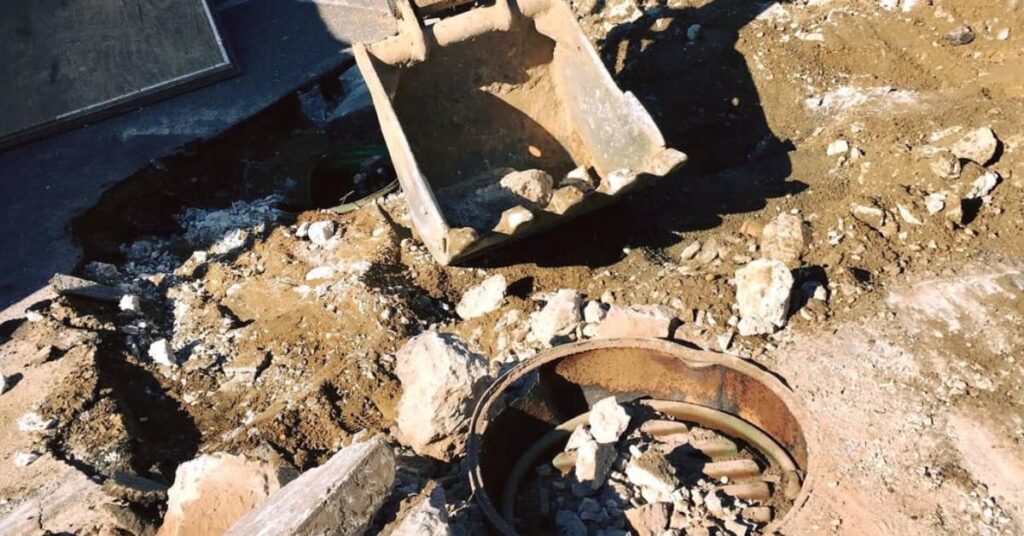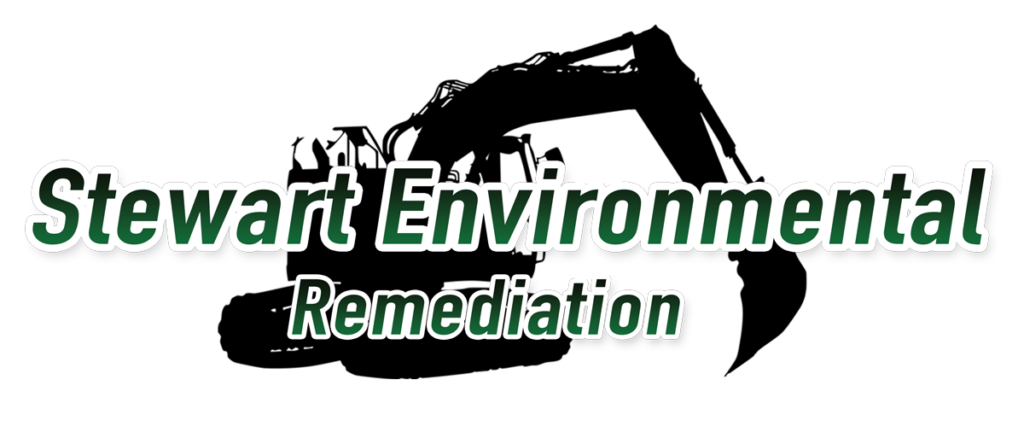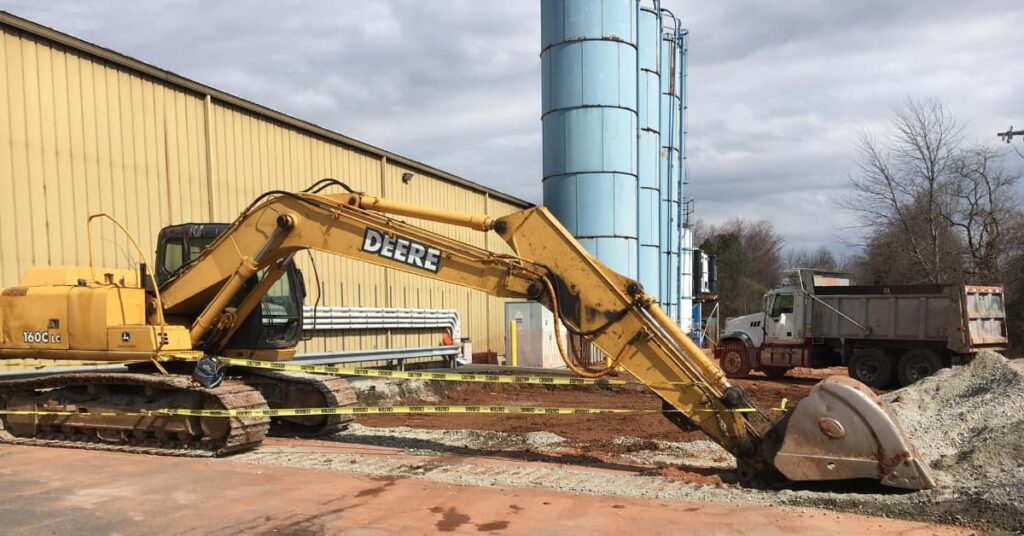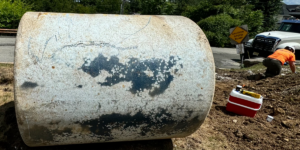Connecticut Commercial Oil Tank Laws and Regulations For Above-Ground and Under-Ground Petroleum Storage Tanks
Connecticut has established laws and regulations for commercial oil tank installation, removal and abandonment to protect its citizens and the environment from potential hazards such as leaks and spills that can contaminate soil and groundwater. These laws apply to businesses, homeowners’ associations, and other entities that use commercial oil tanks.
This article will briefly discuss the Connecticut oil tank codes for aboveground and underground petroleum storage and the necessary oil tank removal and abandonment permit.
Connecticut Oil Tank Code
The Connecticut Oil Tank Code governs the state’s installation, maintenance, and removal of commercial oil tanks above ground and underground. In addition, they are subject to the National Fire Protection Association (NFPA) code 30A.
As the requirements are adopted locally, they require licensed professionals to install and inspect all commercial oil tanks annually and comply with state leak detection requirements. For example, leak detection for UST includes testing the automatic tank gauging systems, interstitial monitoring (in the case of double-walled tanks), monthly tracking of “vapor sniffing” wells and groundwater monitoring wells. In addition, the piping must be periodically tested for integrity.
In addition, the codes mandate that commercial oil tanks be placed on a stable foundation and secured to prevent tipping at least seven feet from any open flame or fire. In addition, all commercial oil tanks must have a visible fill and vent pipe. The fill pipe must be located outside the building and have an automatic shutoff valve to prevent overfilling.
Aboveground Petroleum Storage
Commercial aboveground tanks with a capacity greater than 660 gallons or more than one tank with a total aboveground storage capacity of more than 1,320 gallons may require an SPCC Plan [40 CFR 112.1].
This plan outlines the facility’s plan to prevent spills and develop contingency plans in case of spills. The aboveground storage tank should be located over an impervious storage area or within a dike with containment volumes equal to 110% of the storage tank’s capacity.
Underground Petroleum Storage
Underground oil tanks (USTs) with ten percent or more of total volume below grade (including the connected underground pipes volume) must meet particular requirements promulgated November 1, 1985 [RCSA §22a-449(d)-1 and §§22a-449(d)-101-113].
These general requirements include
- Tank and piping must be constructed of noncorrosive materials or externally coated cathodically protected steel and installed according to the manufacturer’s specifications.
- A facility must have an approved leak detection method, including maintaining all activity records for five years.
- The fill pipes on the oil tanks have a way of collecting spills from delivery hoses.
- Overfill protection, such as automatic shutoff devices, is required and will activate at ninety percent UST capacity and restrict flow during any deliveries.
- The tank must be registered with the local fire marshal and the DEP.
- If the underground buried storage capacity has more than 42,000 gallons of petroleum product, it may require a spill, control, prevention, and countermeasure.
Oil Tank Removal & Abandonment Permit

Additional requirements exist when a facility closes storage tanks by removing or abandoning them.
Connecticut requires a mechanical permit to remove or abandon a commercial oil tank. The commercial property owner must obtain the permit from the local fire marshall or building department, generally in the land use department. The permit authorizes the removal or abandonment process to ensure the tank’s removal or abandonment is done safely without causing additional harm to the environment.
The permit application requires information about the tank’s size, location, and contents and a plan for removal or abandonment. The plan must include details about how the tank will be emptied, cleaned, and disposed of.
For removing a buried oil tank, a certified soil test must be done, attesting that no leakage has occurred and that nearby soil and groundwater have not been contaminated.
If the tank is being abandoned, the plan must include details about how it will be filled and sealed to prevent leaks.
Once the permit is approved, the tank can be removed or abandoned. Licensed professionals must do the desired process and comply with all applicable Connecticut commercial oil tank laws and regulations. The tank must be emptied, cleaned, and properly disposed of or abandoned. The area where the tank was located must be restored to its original condition, ensuring there is no contamination.
Connecticut Commercial Oil Tank Reporting and Record Keeping
Owners and operators of commercial USTs must report new oil tank installations, closures, removals, abandonments, and changes in owner, operator and billing information to the UST Enforcement Program on the Notification for Underground Storage Tanks Form (DEEP-UST-NOT-001).
Owners and operators of commercial USTs must keep and maintain records at the UST site, ensuring they are immediately available for inspection by DEEP.
Documentation of corrosion protection equipment operations, compliance with release detection requirements, UST system repairs, and results of the site investigation conducted at closure must always be available.
These records, including copies of all Notification Forms, must stay at the UST site for a minimum of five years beyond the operational life of the UST system. If older than five years, the records, with written approval by the commissioner, may be kept at an alternate site; however, they must always be readily available for the DEEP inspectors to review upon request.
Need Connecticut Commercial Oil Tank Removal Services?
For most commercial property owners, this article can be a bit confusing. In addition, there is so much more to know about Connecticut commercial oil tank laws and regulations for above-ground and underground petroleum storage tanks. If you find yourself in this predicament and need to know more about the oil tank on your commercial property, please reach out to our professional Stewart Environmental Remediation team of experts. We offer professional services abiding by Connecticut commercial oil tank laws and regulations.
Our services include commercial above-ground oil tank removals, underground oil tank removals, oil tank sweeps, excavation, site remediation and vacuum truck services to dispose of waste adequately.






